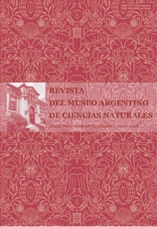Dieta y ecomorfología de la ictiofauna del arroyo Manantiales, provincia de Buenos Aires, Argentina
Resumen
Diet and ecomorphology of the ichthyofauna of Manantiales stream, Buenos Aires province, Argentina. The present study addresses the correlation between diet and morphology of 19 fish species that inhabit the Manantiales stream at the headwaters of the Samborombón river, Buenos Aires province, Argentina. The species were classified into four trophic groups: carnivores, omnivores, insectivores and detritivores-alguivores. Twelve ecomorfologic attributes related to habitat use and feeding patterns were analyzed to distinguish ecomorphologic groups of species with the food consumed. Univariate and multivariate analysis techniques were used to determine groups of species using the ecomorfologic and diet attributes as descriptors. Carnivores were associated with well developed head, mouth, pectoral and caudal fins and usually presenting compressed bodies. Omnivores were a more heterogeneous group. Nektonic forms of this group were associated with a compressed body, lateral eyes and relatively small size of the pectoral fins and caudal fins; nektobentonic forms were associated with small mouth, fusiform body and long caudal peduncle; benthic forms were related to depressed body, dorsal eyes, ventral mouth and long digestive tract. The only nektonic species consuming insects on the surface is characterized by a strongly compressed body, lateral eyes, tail and big wide mouth facing up. The detritus-alguivores had a long digestive tract, mouth ventral or terminal and long caudal fin. The significant relationship between diet and ecomorphology allows to sustain that fish with similar diets converge towards common ecomorfologicic attributes.
Texto completo:
PDFEnlaces refback
- No hay ningún enlace refback.

This work is licensed under a Creative Commons Attribution 3.0 License.

